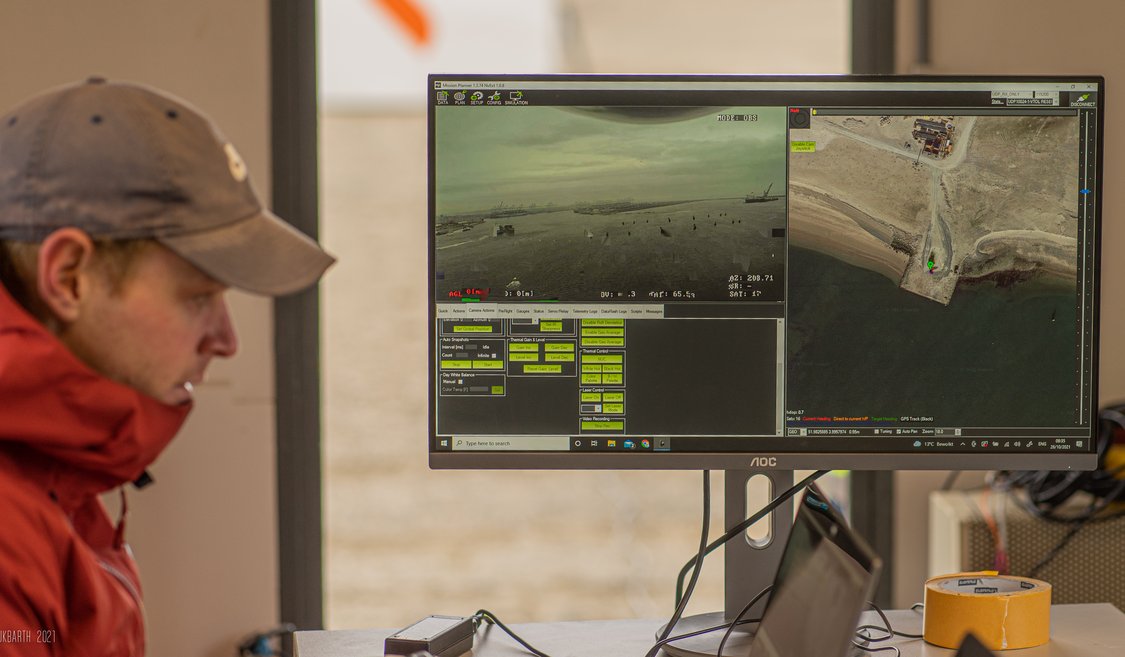Revolutionizing the Port of Rotterdam: Avy's journey to greater autonomy
In 2021, Avy started their collaboration with the Port of Rotterdam. The goal? To support the Port Authority’s aim to make the port safer, smarter and faster with long-range drones.
As technology advances, automated drone operations are becoming increasingly prevalent and the collaboration has led to a successful proof of concept for autonomous drone operations in a complex environment. By overcoming significant regulatory challenges and improving technical aspects, Avy has been able to conduct successful limited BVLOS flights and prove the added value of drone imagery.
First - a demo
In October 2021, Avy started out with 4 days of Extended Visual Line of Sight (EVLOS) flying above the Port of Rotterdam as part of a demo. With the Aera 1.5 (equipped with the AirAware Camera) we were able to provide the harbour masters’ operational teams with high quality imagery of areas of interest, such as: infrastructure-, environmental-, and harbor master- inspections and monitoring. Based on the results of these flights and by answering several crucial questions we were able to prove the added value of additional drone imagery and provide the Port of Rotterdam with input to stimulate innovation.

Achieving Greater Autonomy
While the EVLOS demo focused primarily on the flight missions and generating imagery, the BVLOS proof of concept started in September 2022, focussed on autonomy to a greater degree. There were two important components to achieving this:
- The release of the Aera 3 and improvements made on the Docking Station. They enable us to fly more effectively in a wider range of weather conditions, resulting in more complex and extensive operations.
- The regulatory approval we obtained for limited BVLOS flights (meaning we use an airspace observer to scan the sky for traffic deconfliction). Applying for BVLOS operations in the Port of Rotterdam required close collaboration between Avy, the Dutch Civil Aviation Authority (ILT), the Port of Rotterdam, other stakeholders and SAR operators. Important factors to be considered throughout this process included: safety mitigations in such a dangerous area, data protection, and integrating with existing systems. However, the biggest challenge that arose was the regulatory framework. To be exact, at the time of the application, there was no published Predefined Risk Assessment (PDRA) in place for BVLOS in an uncontrolled airspace with an airspace observer. This meant that Avy had to work very closely with the Dutch authorities on developing the basis for limited BVLOS and submitting the SORA before EASA published the PDRA.
From September 2022 onwards, almost 1000 km of BVLOS flights, across 3 different routes that cover the majority of the Western Port, were completed. During these flights we are focused on improving the existing use cases (infrastructure-, environmental-, and harbor master- inspections and monitoring) by gathering feedback from the Port of Rotterdam camera team and Operational Managers as well as other stakeholders.

Moving Upward and Onwards
Besides continuing to gain flight hours that are valuable for a numerous of reasons, we are also adding new points of interest on the routes, focusing on integrating the operations with the existing camera network in the Port of Rotterdam and starting remotely operated flights in the near future. We have indeed already obtained approval for remote operations, inside and outside UDP (day and night flights). As you read this, our pilots are getting trained for this purpose. We plan to conduct these flights either from our headquarters (Avy Operations Center, AOC) or from Rotterdam Harbour Coordinations Centre, with a Ground Safety Officer (GSO) present at the takeoff location and a Flight Operator operating the drone remotely. While the presence of a GSO is currently required for additional safety measures, we are actively working towards eliminating this requirement altogether in the future.
The very successful collaboration has shown great potential for the future of autonomous drone operations. Continuing this fruitful collaboration, we are confident that we can further improve the safety and efficiency of port operations. As we continue to innovate and develop new technologies, we look forward to providing even more value.
